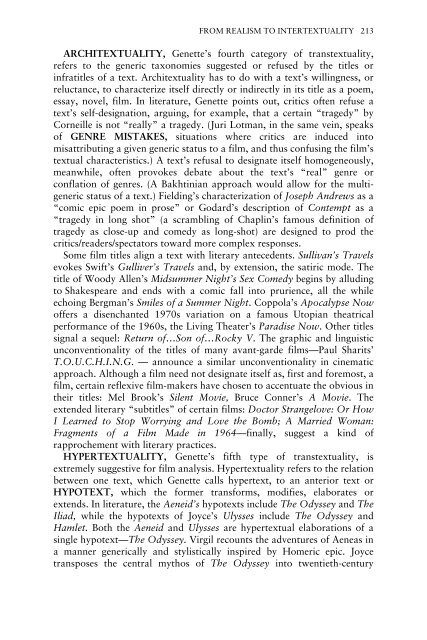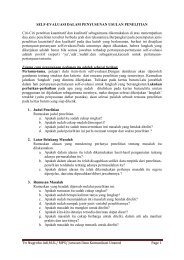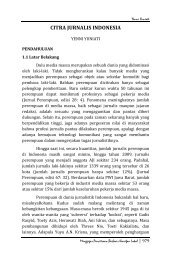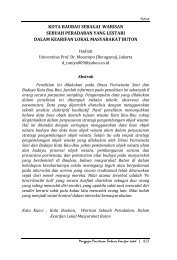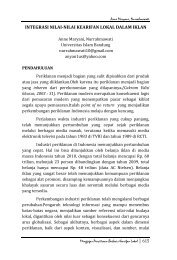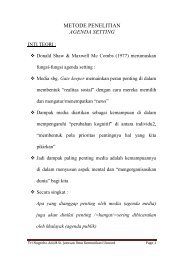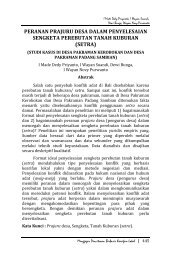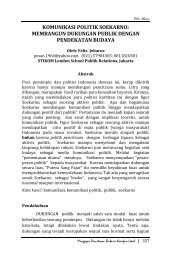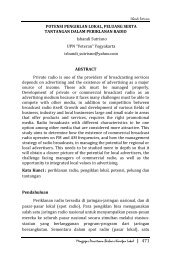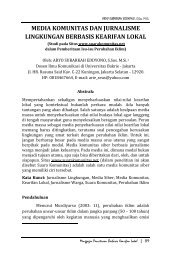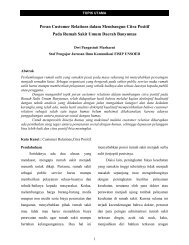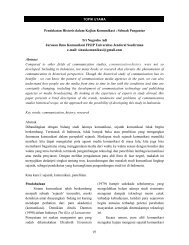New Vocabularies in Film Semiotics
New Vocabularies in Film Semiotics
New Vocabularies in Film Semiotics
Create successful ePaper yourself
Turn your PDF publications into a flip-book with our unique Google optimized e-Paper software.
FROM REALISM TO INTERTEXTUALITY 213<br />
ARCHITEXTUALITY, Genette’s fourth category of transtextuality,<br />
refers to the generic taxonomies suggested or refused by the titles or<br />
<strong>in</strong>fratitles of a text. Architextuality has to do with a text’s will<strong>in</strong>gness, or<br />
reluctance, to characterize itself directly or <strong>in</strong>directly <strong>in</strong> its title as a poem,<br />
essay, novel, film. In literature, Genette po<strong>in</strong>ts out, critics often refuse a<br />
text’s self-designation, argu<strong>in</strong>g, for example, that a certa<strong>in</strong> “tragedy” by<br />
Corneille is not “really” a tragedy. (Juri Lotman, <strong>in</strong> the same ve<strong>in</strong>, speaks<br />
of GENRE MISTAKES, situations where critics are <strong>in</strong>duced <strong>in</strong>to<br />
misattribut<strong>in</strong>g a given generic status to a film, and thus confus<strong>in</strong>g the film’s<br />
textual characteristics.) A text’s refusal to designate itself homogeneously,<br />
meanwhile, often provokes debate about the text’s “real” genre or<br />
conflation of genres. (A Bakht<strong>in</strong>ian approach would allow for the multigeneric<br />
status of a text.) Field<strong>in</strong>g’s characterization of Joseph Andrews as a<br />
“comic epic poem <strong>in</strong> prose” or Godard’s description of Contempt as a<br />
“tragedy <strong>in</strong> long shot” (a scrambl<strong>in</strong>g of Chapl<strong>in</strong>’s famous def<strong>in</strong>ition of<br />
tragedy as close-up and comedy as long-shot) are designed to prod the<br />
critics/readers/spectators toward more complex responses.<br />
Some film titles align a text with literary antecedents. Sullivan’s Travels<br />
evokes Swift’s Gulliver’s Travels and, by extension, the satiric mode. The<br />
title of Woody Allen’s Midsummer Night’s Sex Comedy beg<strong>in</strong>s by allud<strong>in</strong>g<br />
to Shakespeare and ends with a comic fall <strong>in</strong>to prurience, all the while<br />
echo<strong>in</strong>g Bergman’s Smiles of a Summer Night. Coppola’s Apocalypse Now<br />
offers a disenchanted 1970s variation on a famous Utopian theatrical<br />
performance of the 1960s, the Liv<strong>in</strong>g Theater’s Paradise Now. Other titles<br />
signal a sequel: Return of…Son of…Rocky V. The graphic and l<strong>in</strong>guistic<br />
unconventionality of the titles of many avant-garde films—Paul Sharits’<br />
T.O.U.C.H.I.N.G. — announce a similar unconventionality <strong>in</strong> c<strong>in</strong>ematic<br />
approach. Although a film need not designate itself as, first and foremost, a<br />
film, certa<strong>in</strong> reflexive film-makers have chosen to accentuate the obvious <strong>in</strong><br />
their titles: Mel Brook’s Silent Movie, Bruce Conner’s A Movie. The<br />
extended literary “subtitles” of certa<strong>in</strong> films: Doctor Strangelove: Or How<br />
I Learned to Stop Worry<strong>in</strong>g and Love the Bomb; A Married Woman:<br />
Fragments of a <strong>Film</strong> Made <strong>in</strong> 1964—f<strong>in</strong>ally, suggest a k<strong>in</strong>d of<br />
rapprochement with literary practices.<br />
HYPERTEXTUALITY, Genette’s fifth type of transtextuality, is<br />
extremely suggestive for film analysis. Hypertextuality refers to the relation<br />
between one text, which Genette calls hypertext, to an anterior text or<br />
HYPOTEXT, which the former transforms, modifies, elaborates or<br />
extends. In literature, the Aeneid’s hypotexts <strong>in</strong>clude The Odyssey and The<br />
Iliad, while the hypotexts of Joyce’s Ulysses <strong>in</strong>clude The Odyssey and<br />
Hamlet. Both the Aeneid and Ulysses are hypertextual elaborations of a<br />
s<strong>in</strong>gle hypotext—The Odyssey. Virgil recounts the adventures of Aeneas <strong>in</strong><br />
a manner generically and stylistically <strong>in</strong>spired by Homeric epic. Joyce<br />
transposes the central mythos of The Odyssey <strong>in</strong>to twentieth-century


